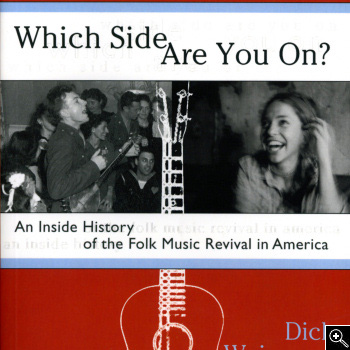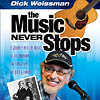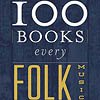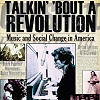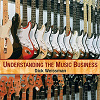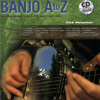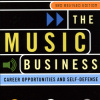Which Side Are You On?
Paperback Released: December 30, 2006Hardcover Released: September 30, 2005
An exhaustive history of the folk music revival from the early 20th century folk song collectors to such contemporary folk-based artists as Ani Di Franco and Nickel Creek. The book includes sections on the internal and external politics and business of folk music.
PRAISE
"You will come away with a better understanding of the folk word and maybe listen to music from a more community standpoint, maybe paying more attention to the artist and content than fluff and hype."
- Chris Lunn, Festivals Directory
"A thoughtful and entertaining look at the swirling currents that have swept folk music into the 21st century - highly recommended."
- Jack Bohl, Concert Chair, Portland Folk Music Society
"I'm in awe of his scholarship."
- Billy Faier, No Depression
"Very interesting and informative."
- Meryle Korn, Local Lore, Portland, Oregon
"This book is an eye-opener."
- Artie Traum
DESCRIPTION
In 1932 Florence Reece, the wife of a Kentucky coal miner, wrote one of the classic topical songs preserved in the folk musical revival. The song, "Which Side Are You On?," contrasts the lot of the working class and the bosses, and asks the listener to choose. This politically charged song was performed again during the Civil Rights Movement, with its lyrics appropriate to the 1960s. It was recorded more recently by Billy Bragg. Indeed, the story of this song might serve as a microcosm of the entire history of the folk music revival.
Dick Weissman, former member of the Journeymen and a musician still releasing CDs of his original compositions, brings his personal and professional involvement to this definitive history. Which Side Are You On? includes chapters and sections on the Lomaxes, Harry Smith, the little known Lawrence Gellert, Woody Guthrie, Josh White, Leadbelly, Pete Seeger, groups such as the Weavers and the Kingston Trio, Dave Van Ronk, Bob Dylan, Joan Baez, Paul Simon, Joni Mitchell, Judy Collins, Mary Chapin Carpenter, Natalie Merchant, Ani Difranco, Bela Fleck, Nickel Creek, the Indigo Girls, and many others.
Which Side Are You On? also explores the folk music business in depth: how it all works, where the power really lies, how the artists have been manipulated and often exploited, the dynamic between artist and audience.
Though he writes as a historian, Weissman also has seen it all from the inside, and includes anecdotes that are both funny and poignant: My friend and guitarist-singer Artie Traum took care of one of two houses that Bob Dylan owned in Woodstock, some thirty five years ago. The house had thirty seven rooms! Artie was instructed not to give out Dylan's phone number to any caller. The first caller was Joan Baez, and Artie followed instructions, calling Dylan at the other house to relay the call. During Artie's house-sitting chores, I visited him. He took me on a brief tour of the house. In one room were sacks of mail. We randomly opened a half-dozen letters. The one that I remember was by a female fan in North Dakota. She had been to a Dylan concert and reminded him that they had met. There was something touching though pathetic about the letter.
REVIEWS
From Publishers Weekly
"Can white folks sing the blues?" asks Weissman in his new book, which covers the folk music revival of twentieth century America and the relationships between the various types of music that derived from it. Weissman touches on the music business and the motives of some folksong collectors such as Jack Tharp, John Lomax, Lawrence Gellert, Charles Seeger and Alan Lomax, and explores the definition of "folksong" and the idea of "authenticity" in folk music. The book contains an interesting, albeit brief, segment on the rise and fall of folk-rock, in the midst of which Weissman hastily dismisses psychedelic rock ("many of the bands were under the influence of acid, and their performances featured long jam sessions."). Among the most interesting sections are those on folksong as protest music and the blacklisting of folk singers, particularly The Weavers. Throughout the volume, big name artists such as Bob Dylan, Joni Mitchell and Joan Baez appear, and Weissman discusses them in the contexts of their predecessors and the marketplace. Weissman's prose is casual, sometimes awkwardly so, and his knowledge of people, places and repertoire, and the connections between them, is so extensive that at times passages can read like cumbersome lists of names. Folk enthusiasts will appreciate this nearly one-stop shop of American folk history, but anyone with a casual interest in the form may find Weissman's information onslaught too overwhelming. 8 pp. b&w photos.
Copyright © Reed Business Information, a division of Reed Elsevier Inc. All rights reserved.
From Booklist
Topical songs are news again as pop musicians consider taking political stances, but using folk songs politically dates back many decades. Weissman's concise history of folk music and politics offers an insider's perspective, for as musician, singer, and, later, songwriter and record producer, he knows the territory. He discusses the folklorists (e.g., Francis James Child, Cecil Sharp, Alan Lomax) who collected American traditional music, the 1930s protest singers who both made a living and sang for social change (e.g., Leadbelly, Woody Guthrie, Josh White, Pete Seeger, the Weavers), McCarthyism and the blacklist era, the 1950s folk revival, the so-called folk scare of the early to mid-1960s, the singer-songwriter and New Left intersections, folk- and country-rock, the women's music movement, the blues revival, and other roots music. He consistently explores the often-antagonistic relations between the various musicians and music genres. Indeed, Weissman covers so much material in so relatively few pages that many may wish he would slow down occasionally and say more about the many fascinating personalities and issues he introduces. June Sawyers
Copyright © American Library Association. All rights reserved
